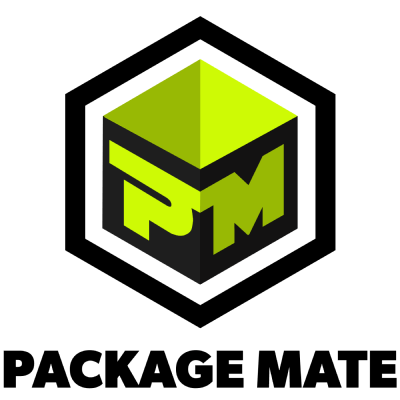What is a workflow?
Almost all domains in modern business involve operations like lead generation, inventory management, order fulfillment, after-sales service, and feedback management. And, when you look closer, you’ll see that each of these operations have multiple sets of tasks that start from a data source and end elsewhere, which contribute to the overall process.
These series of tasks that form a data flow from one place to the other (in most cases between different apps, or in some cases within the same app itself) are called workflows.
Purchase order recieved
Create invoice
Email invoice to client
How workflow automation works
Workflow automation involves using techniques and technologies like integration, task automation, and process mapping to automatically perform sequences of tasks as part of completing a bigger process. Workflow automation requires a trigger (an event that initiates a workflow) and actions (or steps) that follow the trigger.
In simple terms: When something happens (trigger) - > Do this (action)
When a form response is submitted
Add a lead to CRM
Automate your first workflow now!
Get StartedWhy you need workflow automation
Traditionally, workflows were carried out between physical files and locations. Then it evolved into systems within a business' private networks, and later moved to apps on the cloud. When technologies evolved, automation also matured, and businesses started to employ workflow automation to improve their speed and efficiency and reduce costs.
Today, automation not only serves as a process that saves time and effort, but it can also improve the ROI of a business, achieve greater process excellence, and provide more insight and value to the organization.
Using workflow automation can increase operational efficiency and eliminate human error when completing daily processes, as opposed to completing tasks manually. From customer onboarding to servicing, streamlining projects with automated workflows delivers a convenient and efficient customer experience.

The major benefits of workflow automation:
- Increased efficiency
- Reduced errors
- Enhanced productivity
- Cost savings
- Better compliance
Get a deeper understanding of workflow automation in our ebook!
download ebookHow to identify the workflows to automate
To successfully implement workflow automation at your organization, you first need to identify which workflows can benefit the most from getting automated. Here are the steps you can take to do this:
Analyze current workflows by listing out the repetitive tasks and mapping dependencies and data flow.
Assess automation impact by evaluating time saved, error reduction, efficiency, and scalability.
Identify easily automatable workflows that follow clear paths and procedures. Start with easier workflows and gradually automate more.
Consider cross-functional workflows spanning teams for better communication and time savings.
Involve your teams in identifying the triggers, actions, and logical steps of the workflows.
Prioritize workflows with the highest return on investment (ROI) and easiest implementation effort.
Automate your first workflow now!
Get StartedSome workflows you can easily automate
Customer relationship management (CRM)
- Customer support
- Lead management
- Feedback collection
Finance & accounting
- Invoice generation
- Bill payment
- Purchase order generation
Automate your first workflow now!
Get StartedWhat does a workflow automation platform do?
A good workflow automation platform shouldn't just solve your workflow automation challenges but also be able to act as a single platform to host all your workflows, manage them, and troubleshoot and fix problems with ease.
Over and above the obvious integration and workflow automation capabilities, a comprehensive workflow automation platform should:
-
Empower everyone to build and automate workflows without code
-
Monitor and troubleshoot their workflows
-
Support all your favorite cloud and on-premises apps
-
Receive data from any source
-
Collaborate and build workflows with ease
Why Zoho Flow
At Zoho Flow, our focus is on creating a platform that saves you time and effort. We're constantly improving, to ensure we provide a comprehensive workflow automation platform for our users. When you choose Zoho Flow, you get all the capabilities of a great workflow automation platform and much more.
Here are some key features:
Intuitive drag-and-drop builder
Choose your trigger, drag and drop actions, add conditional branches, and push your flow live.

900+ cloud and on-premises apps, 1,300+ templates
Zoho Flow supports over 900 cloud and on-prem apps, along with 1,300+ templates, to jumpstart your automation journey.

On-premises integrations
Most popular integration/workflow automation platforms available on the market offer an extensive gallery of cloud applications, but little to no support for on-premises applications. With Zoho Flow, you get a growing list of on-prem integrations, and you can securely connect your private network to the cloud for integrations, without compromising on data security.
- With Zoho Flow, you also get:
- Workflows that can be triggered from apps, emails, custom URLs, web feeds, and schedules
- Wide range of logic elements, such as conditional branches, time delays, and error branching
- Easy monitoring and troubleshooting, with flow histories and auto rerun of failed flows
- Streamlined collaboration with teammates, with shareable connections and member roles
Extending the Zoho suite
A key reason to use Zoho Flow is the added advantage it offers to existing Zoho customers and businesses planning to enter the Zoho ecosystem. Zoho Flow completes the Zoho package by offering a custom workflow builder on top of an already tightly integrated suite of apps.
Integrate zoho apps
500+
flows created per day

75K+
user community

150K+
workflows executed

5M+
http calls per day

1B+
tasks executed
Automate your first workflow now!
Get StartedHear what our customers have to say:
Trusted by businesses worldwide
try zoho flow for freeFrequently Asked Questions
What is a workflow?
Most business operations involve activities that are made up of multiple series of tasks, triggered by various events, to complete a process or achieve a goal. These sequences of tasks that follow source events are called workflows.
What is integration?
Integration is the means by which software applications are connected, so as to enable them to work together seamlessly. It involves connecting apps using technologies such as APIs (application programming interfaces) to create a unified ecosystem where data can flow freely between apps without manual intervention.
What is workflow automation?
Workflow automation is the process of automating repetitive tasks within an organization. By automating repetitive tasks that form workflows, workflow automation increases efficiency, reduces errors, and frees up human resources for more important and creative work.
Do I need to know code to automate workflows?
No, you don't need to know how to code to automate your workflows. Modern workflow automation platforms, such as Zoho Flow, provide all the capabilities required to automate your workflows—striking a balance between the power and flexibility of code and the ease of using a drag-and-drop workflow builder.
What is the difference between workflow automation, workflow management, and process automation?
Workflow automation, workflow management, and process automation are related concepts in business, but are inherently different. While workflow automation deals with automating most or all of the tasks involved in a workflow, workflow management is more about designing workflow structures, monitoring workflow performance, allocating resources, and resolving bottlenecks in your business workflows.
Process automation, however, is a much broader concept that focuses on automating entire business processes that may have tens or hundreds of workflows within each process.
How to get started with Zoho Flow
If you already have a Zoho account, you can just sign in to Zoho Flow. Or you can create a new account and sign up for Zoho Flow here!


